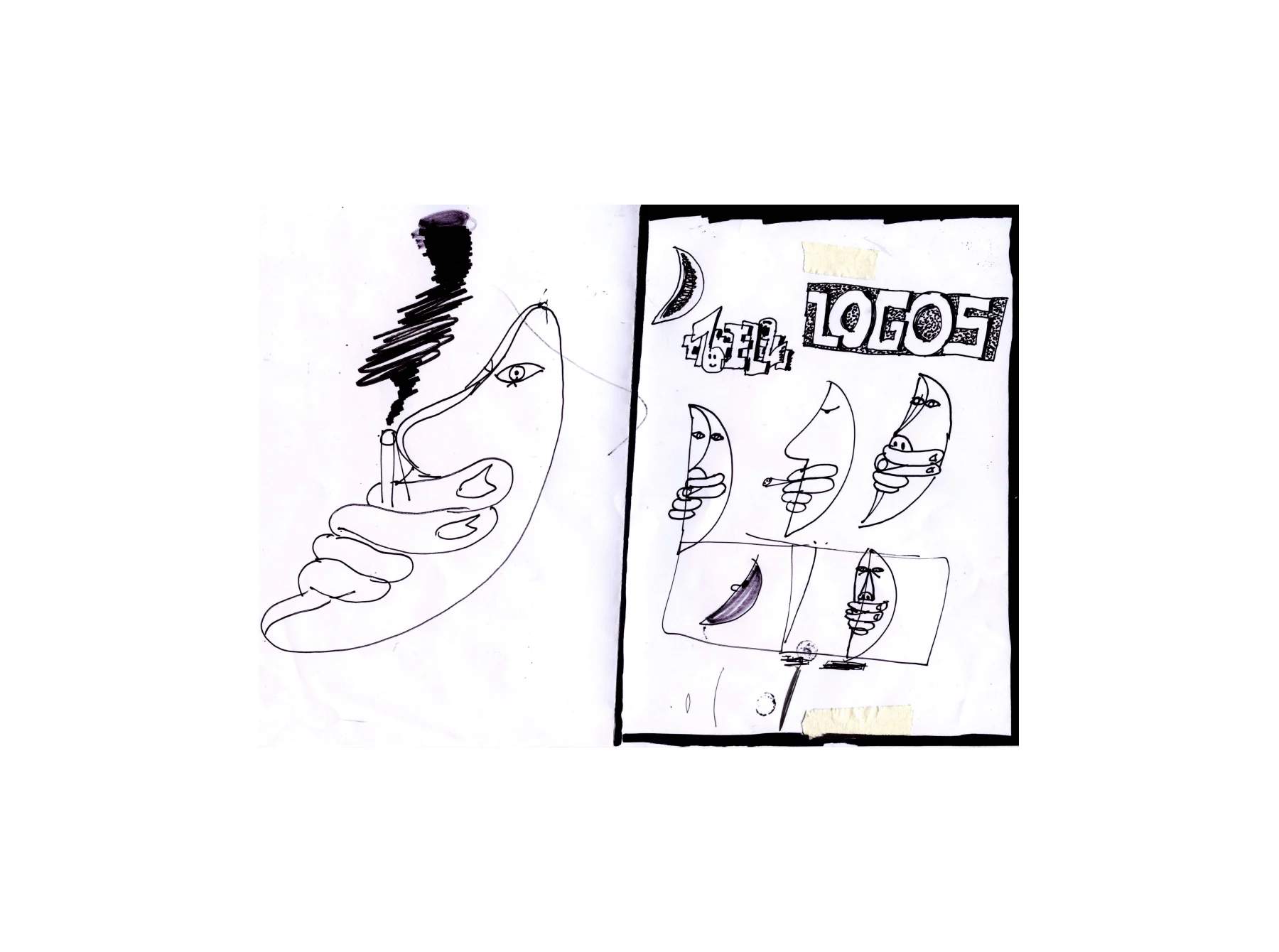
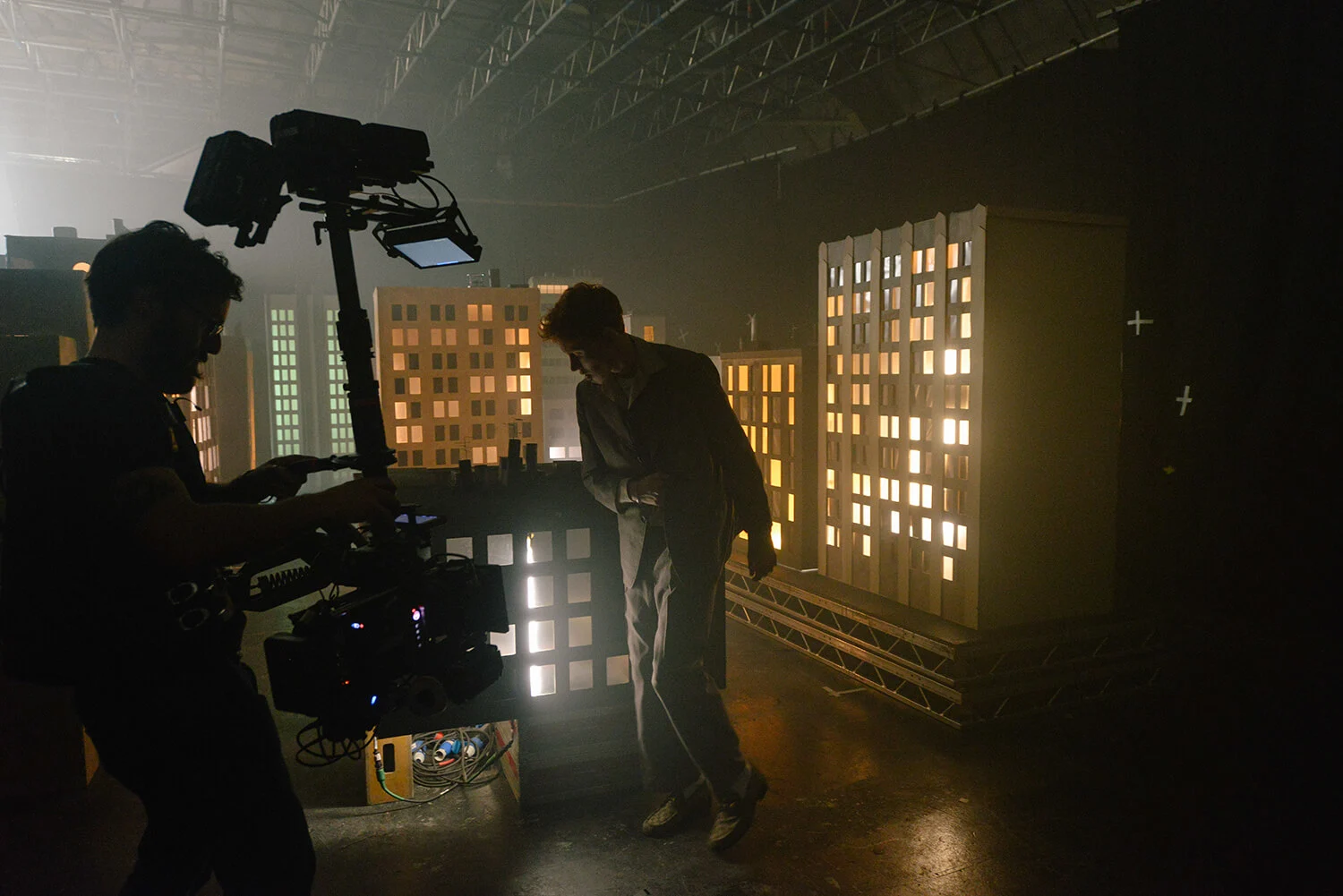
Archy Marshall, better known as King Krule, is an unlikely star. Still just 23, the redheaded South Londoner is known for his raw, unapologetic music that borrows from jazz, hip-hop and indie-rock all at once.
In this series, King Krule sits down with three of his closest collaborators to discuss how they turn his music videos into visual masterpieces. See the whole series here.
The combination of dragging guitars and synths with his voice, that goes from muttering to screaming, creates a brilliant tension that keeps you trapped in his songs.
It doesn’t scream commercial success, but right from the off musicians from Queen B to Tyler, the Creator were singing his praises. Now the rest of the world has caught up too; he’s been profiled by The New Yorker and made the shortlist of this year’s Mercury Music prize for his 2017 album, The Ooz.
He still spends his days hanging out with his friends though, many of whom have turned into close collaborators creating the visual worlds for his music. For his latest video Biscuit Town, he worked with his childhood friends Paraic and Michael Morrissey, better known as the director duo cc. WADE.
It’s an intriguing video of Archy moving through a dark shadow city while singing into a recording device. It all started out with the Morrissey brothers making a treatment for the track while Archy was away touring his new album. But it turned out Archy already had some thoughts of what it should look like...
Archy: We met up and I had already loads of ideas for it, which were about a drug dealer and a spaceship-
Paraic: An astronaut.
Archy: Yeah and a chick who looked unimpressed the whole time.
Michael: We were just politely nodding…
Archy: Just knowing that you had this other treatment in mind.


In the end they decided on a slightly different concept, with the video set in an urban environment, focused on the idea of someone hiding from something. At first it might seem like a regular city setting, full of skyscrapers with people living their lives behind the windows. But on closer inspection there seems something off with the buildings. Turns out, they’re entirely made from cardboard boxes.

Michael: I wanted to do a miniature city because I just thought that would be the sickest shit to do. I saw these photos of this guy, this Italian photographer called Matteo Mezzadri. He built a city out of bricks. Literally out of bricks with holes in them.
Paraic: I saw that and I was like, oh fuck you can create a world just out of literally anything. We did a little test of putting cardboard up. Then you just move the camera through it and you do those helicopter shots. Somehow if you see the shape of it your mind reads it as that thing.
Michael: We were at my dad's. We went to one of the supermarkets and got cardboard out of skips and shit. Then put them altogether and then printed out Google Image pictures of buildings, and did tests and little action shots.
Paraic: It looked really shit but it looked kind of sick at the same time. Then we shot Archy and the gang against green screen. Archy was standing there going, “what the fuck is this going to be? What the fuck is this supposed to be?”
Archy: Once it was all lit properly and the way that the camera moved it made everything make sense. I liked that. That was cool.
Paraic: What I really, really love is taking something that's almost childish but then treating it super seriously and taking something like a really abstract thing like a fake bar or a little toy city. When Archy got there on set on the first day and was like, “what the fuck?” It feels fucking ridiculous. I was like “Trust me.”
Archy: Also you've got that perspective of you created that universe so you already know the levels to it, whereas people usually just see things in a two-dimensional flat landscape. It's a perfect reflection of the genius. It is a shadow state. It's not hyper-realism and it's not fucking cardboard. It's that weird in-between thing.
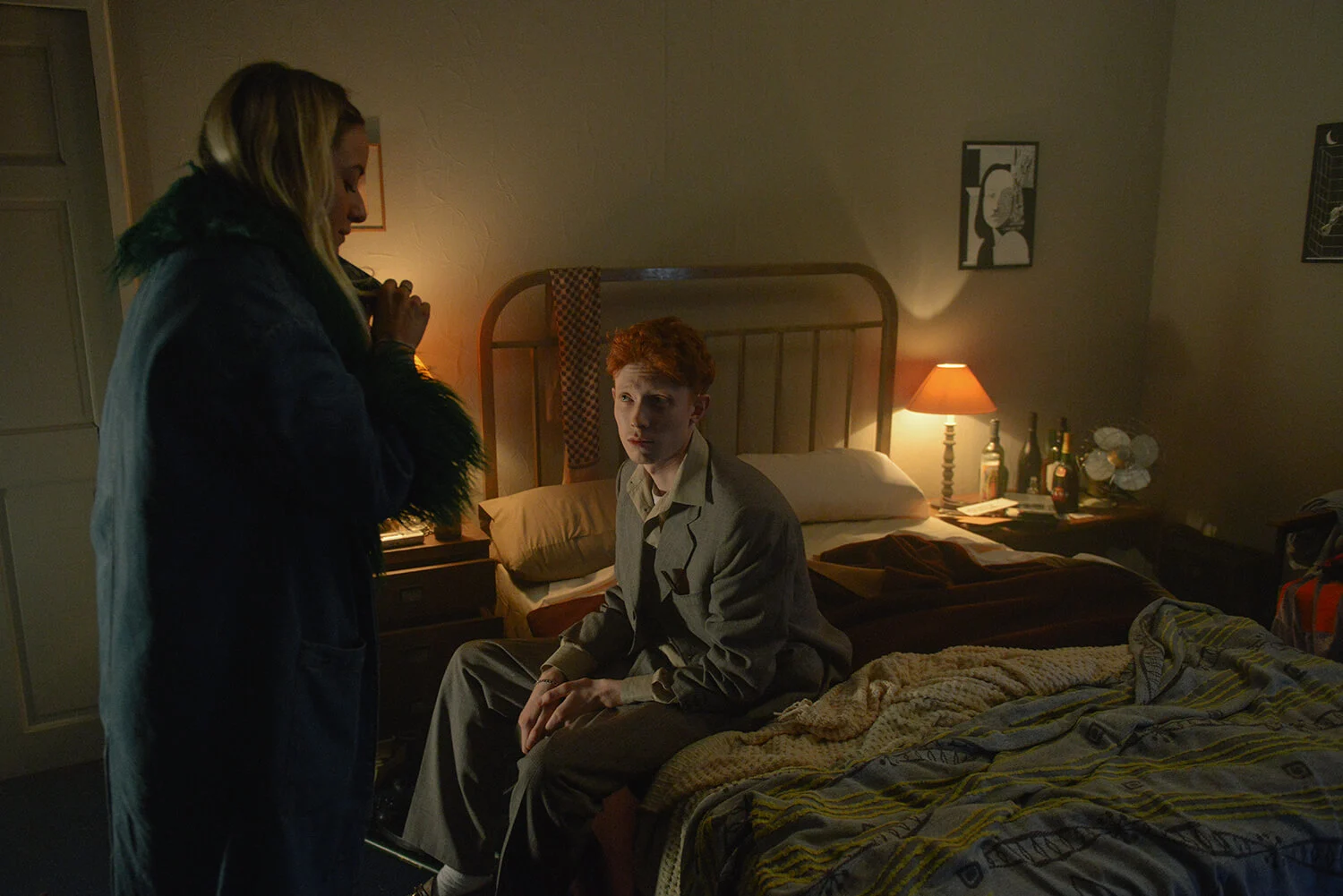
The interior of Archy’s room, also completely made out of cardboard, is testament to Archy and the brothers growing up together, sharing memories and the same reference base when it comes to films, music and television.
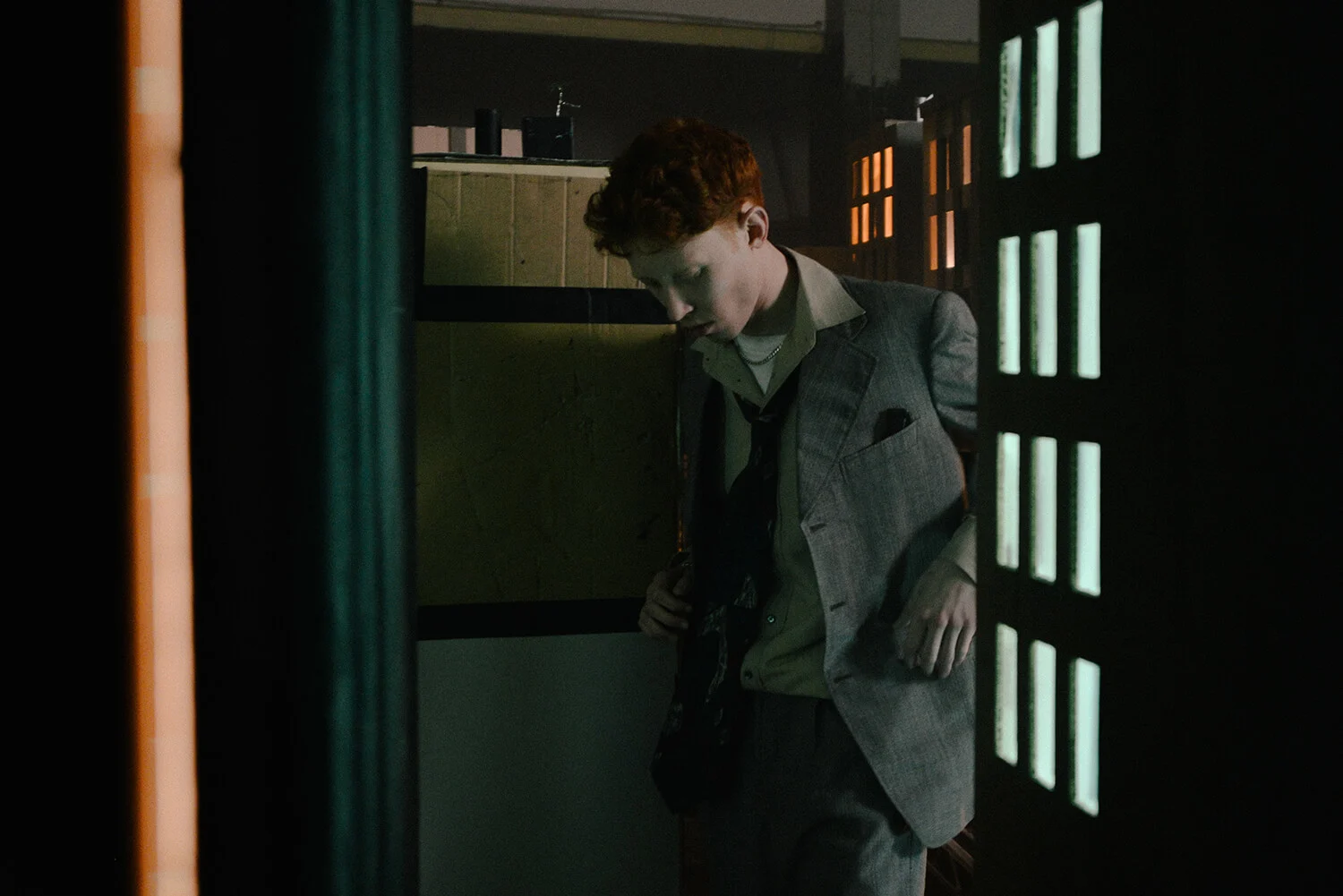
Michael: The shot that goes into the window we actually nicked from the Gus Van Sant remake of Psycho. In the original Psycho Hitchcock always wanted it to be one long shot that goes right into the window because he wanted it to feel like a fly — which relates to the ending with Norman Bates. Then Gus Van Sant managed to correct it with a match card-
Paraic: That was a shot by shot remake. The most pointless thing ever.
Michael: Pointless piece of shit.
Archy: Then you came 'round mine and we watched bits of Fritz The Cat and the kinds of references you wanted to put into it.
Michael: That Fritz the Cat thing actually came from Jack (Archy’s brother). He had a bunch of stuff that he collected on this computer. One of them was a gif of Fritz the Cat outside a window, and because we knew we wanted to have you in some kind of space where everything disappears, it became the most perfect reference. Then we just researched loads of ... What's that name who did-
Paraic: Ralph Bakshi.
Michael: That's how that shit came about.
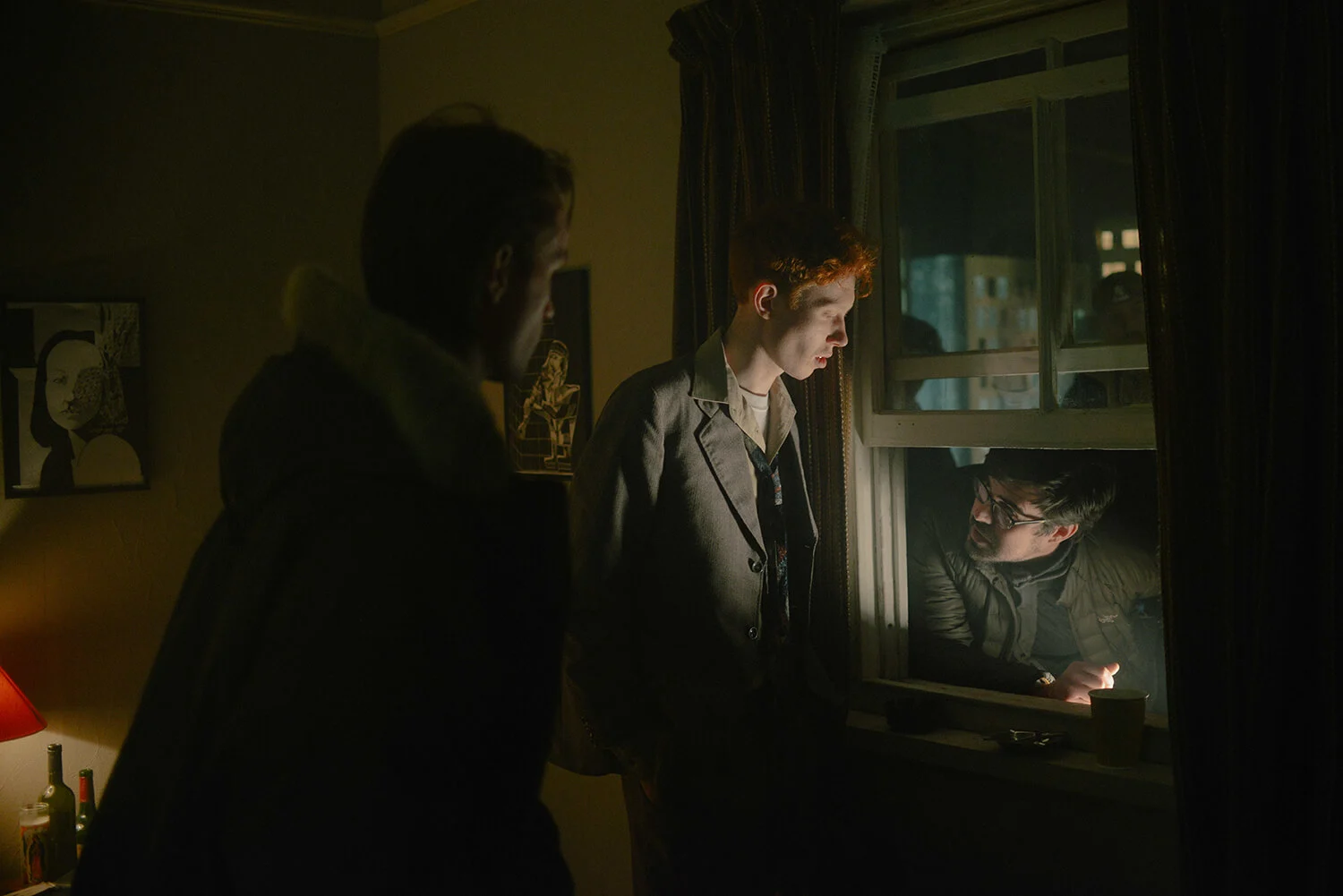


The brilliance of the video lies in the subtlety of these references though; Fritz the Cat is likely to be the only thing you immediately recognize. But there are loads of other gems hidden in the very first scene and throughout the rest of them, referencing the videos Archy and cc. WADE collaborated on before.
For example, the deep sea diver from Octopus reappears and the riverbank featuring in Rock Bottom finds its way back too.
Archy: That room then ties into your previous videos. It's got a portrait of the cactus lady. Then obviously the deep sea diver comes out later in it.
Paraic: Under the photo of the cactus lady is a portrait of the first female deep sea diver.
Archy: Oh really? That was my favorite thing about the video, it had loads of references to past videos. Even the room looked like it tailed off from the bathroom in Octopus.
Michael: I remember the octopus, because we were shooting Rock Bottom. We went into the bathroom, "Oh shit this bathroom looks sick." I remember you walking around going, "We should just do the Octopus video here. There'll be a dog there, a deep sea diver here…
Archy: I think with all of those videos there was a united love in the subtlety of putting something really in the background. I love all the Easter eggs in it.
Paraic: You can look at it again and then you'll notice something different next time. It's just nice to do that.

But even watching the video without recognizing the reference material it stays interesting. There’s a moment when Archy is standing on a boat while people watch him from the riverbank, at some point the camera turns upwards between the building and there’s someone swimming in the sky, and of course when Archy is shot out of nowhere from the bathroom door.
It leaves the viewer with many unanswered questions, something that mirrors the track itself, which Archy describes as a “stream of consciousness.” The videos Michael and Paraic made for King Krule so far are all tied together through an almost psychedelic trip — loads of things happening that at one point might have had a clear concept behind them, but then move onto being something else entirely.

Paraic: What we wanted originally was for Biscuit Town to be this town where you could have gone to hideout as a criminal in a hotel room. I had a thought of maybe there being a bag of money in the room, something to justify the gunshot at the end. Just something to make that make sense. Then when you were in the bar there was going to be someone in the booth watching you like that Tom Waits video of him sitting in a booth dressed as a devil. But we didn't get to shoot that shot because the time ran out. Now it’s you going through these different places and people can put whatever they want into it.
Michael: It was the aesthetic of a noir film. It's going through a really vague character’s stream of consciousness, but with these citizens you feel like everyone's out to get you.
Paraic: There’s a nice thing when you're sitting at the typewriter and you have a dictaphone. Like you're struggling with trying to create something or you're trying to write a song in your own head or you're trying to create this reality.
Archy: I think the main thing that glued it together was the venting. There was a huge amount of just venting in it. In the song there's an idea of chasing down a drug dealer or something and not being able to get through to them. There was this constant pressure in the video where it's like ... It's hard to explain I guess. Basically the video matches up with the aesthetics and the character of the song.
There’s a bit of neuroses to the video. There is an air or an atmosphere of neuroses that matches the song.
The moment the camera moves from the room to the bar is almost like a flashback, it’s like the lyrics in that sense. It's just a stream of consciousness.

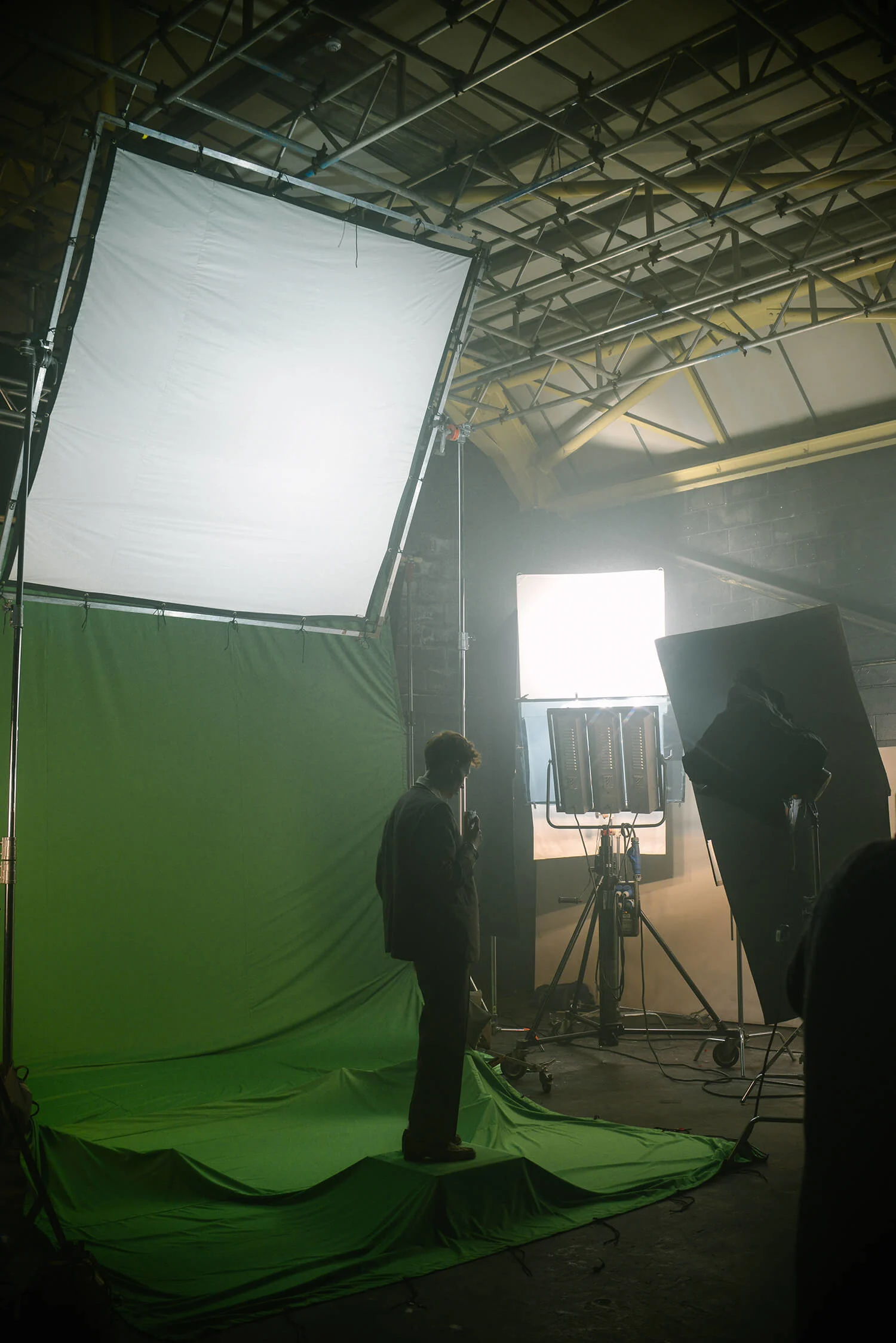
Matching lyrics and music with a visual language isn’t always this easy. As a recording artist, you often have a clear image in mind, of what the song is about and how that should be translated visually. Sometimes a disconnect arises in this mental image and expressing your ideas with an actual video.
Michael: Is it weird having videos of your tracks?
Archy: It is weird, yeah. Some videos, even for this record, I was like, I'm not putting that out. That's because I had such an idea in my head about the song and the visuals that I wanted to go with it that it just didn't seem right.
I think it's interesting because there is a level where you've got to match the song. There's quite a hi-fi sound in it, in the actual track. There's a really hi-fi synth line that goes throughout it, that string, and I think that matches with the camera quality.
You're giving up something you've worked on for someone else to manipulate and do whatever kind of thing with it. I've done videos which I've hated and they've been more successful than anything else in its simplicity. I think as a musician sometimes you've got to let it slide and just let someone else do their thing with it. If you hold onto it too dearly you might never do anything. I guess it's kind of like Stephen King and his own films in a weird way.
It does compromise it. Even with Rock Bottom you had to compromise to my idea. You know what I mean? It created all kinds of stuff where it couldn't quite flow the ways I had imagined and how you had imagined it, because there wasn't a straight up storyline to it. It was just me going, "I want that. I want that. I want that.”

Paraic: I remember coming back from the meeting going “oh fuck, I’m not sure what I’m supposed to be doing with that.”
Michael: Yeah, but was kind of like a prompt. It gives you somewhere to go from. I think doing those first two videos with you might have helped subconsciously with the idea that we can do anything. You don't have to think of what you initially think of; you can go somewhere really wacky.
Archy: That creates the collaboration, I think. As long as there's a collaboration that's face-to-face and not too disconnected, not just I've done this bit, you do that bit kind of thing. There's been some videos with my music where I feel like it’s been a complete disconnect and they come out all right. The collaboration is important to me, even with working with other musicians. I prefer being in a room with them rather than just singing on that or doing this on that and sending it across the internet.
Paraic: It's the same with us as video directors. I don't think we've ever been able to really do anything with anyone we don't know.
Archy: It's an organic thing. It's something that needs to manifest naturally.
Michael: It turns the video into a win-win rather than just either you're happy or we're happy.
Interview by Francisco Garcia
Words by Suzanne Tromp
Photos by Charlotte Patmore

